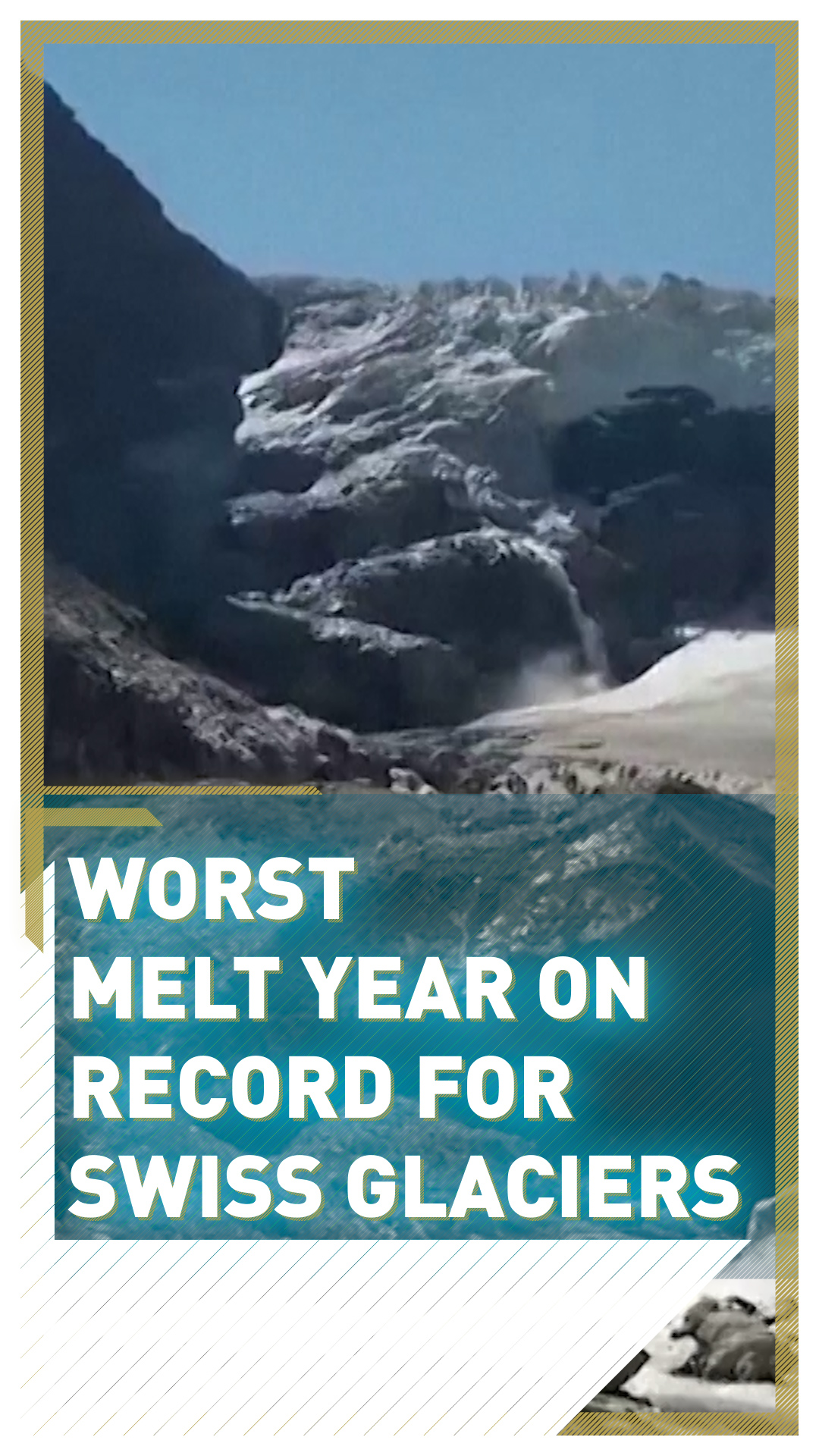00:43

Switzerland's glaciers lost six percent of their total volume this year due to a dry winter and repeated summer heatwaves, shattering previous ice melt records, a new report has revealed.
The study by the Cryospheric Commission (CC) of the Swiss Academy of Sciences laid bare the drastic scale of glacial retreat – which is only set to get worse.
"2022 was a disastrous year for Swiss glaciers: all ice melt records were smashed," the CC said, adding that a two percent loss in 12 months had previously been considered "extreme."
READ MORE
The life and times of Queen Elizabeth II
Global leaders pay tributes to UK monarch
Mid-Autumn Festival poetry
Three cubic kilometers of ice – three trillion liters of water – have melted away, the report said.
"It's not possible to slow down the melting in the short term," said glaciology professor Matthias Huss, Head of Glacier Monitoring in Switzerland, which documents long-term glacier changes in the Alps and is coordinated by the CC.
If carbon dioxide emissions are reduced and the climate protected, "this might save about one third of the total volumes in Switzerland in the best case," he said. Otherwise, the country "will be losing almost everything by the end of the century."

Carbon dioxide emission reductions and climate protection might help reduce future snow melt. /Denis Balibouse/Reuters
Carbon dioxide emission reductions and climate protection might help reduce future snow melt. /Denis Balibouse/Reuters
At the start of the year, the snow cover in the Alps was exceptionally light, before large volume of sand dust blew in from the Sahara between March and May, settling on the surface.
The contaminated snow absorbed more heat and melted faster, depriving the glaciers of their protective snow coating by early onset of the European summer.
The continuous heat between May and early September then ravaged the glacial ice. By mid-September, the once-thick layer of ice that covered the pass between the Scex Rouge and Tsanfleuron glaciers had completely melted away, exposing bare rock that had been frozen over since at least the Roman era.
And in early July, a section of the Marmolada glacier – the biggest in the Italian Alps – collapsed, killing 11 people and highlighting how serious the situation had become.
A key threat from climate change
According to an Intergovernmental Panel on Climate Change report published in February, the melting of ice and snow is one of the 10 key threats from climate change.
"Observations show that many glacier tongues are disintegrating and patches of rock are rising out of the thin ice in the middle of glaciers. These processes are further accelerating the decline," said the report.
"The trend also reveals how important glaciers are to the water and energy supply in hot, dry years," the report stressed, something to consider given that hydroelectricity provides more than 60 percent of Switzerland's total energy production.
The glacial meltwater in July and August alone would have provided enough water this year to completely fill all the reservoirs in the Swiss Alps.
But Huss said that if the country experienced this year's meteorological conditions in 50 years' time, "the impact would be much stronger, because in 50 years, we expect that almost all glaciers are gone and therefore cannot provide water in a hot and dry summer."
Source(s): AFP

